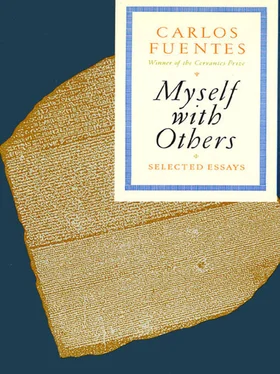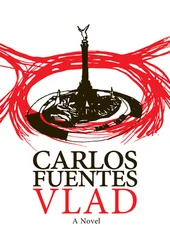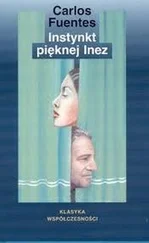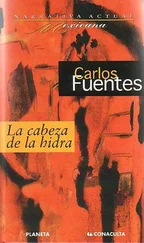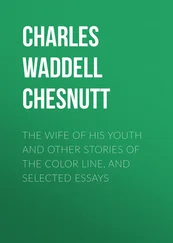Carlos Fuentes - Myself with Others - Selected Essays
Здесь есть возможность читать онлайн «Carlos Fuentes - Myself with Others - Selected Essays» весь текст электронной книги совершенно бесплатно (целиком полную версию без сокращений). В некоторых случаях можно слушать аудио, скачать через торрент в формате fb2 и присутствует краткое содержание. Год выпуска: 1988, Издательство: Farrar, Straus and Giroux, Жанр: Публицистика, Критика, на английском языке. Описание произведения, (предисловие) а так же отзывы посетителей доступны на портале библиотеки ЛибКат.
- Название:Myself with Others: Selected Essays
- Автор:
- Издательство:Farrar, Straus and Giroux
- Жанр:
- Год:1988
- ISBN:нет данных
- Рейтинг книги:5 / 5. Голосов: 1
-
Избранное:Добавить в избранное
- Отзывы:
-
Ваша оценка:
- 100
- 1
- 2
- 3
- 4
- 5
Myself with Others: Selected Essays: краткое содержание, описание и аннотация
Предлагаем к чтению аннотацию, описание, краткое содержание или предисловие (зависит от того, что написал сам автор книги «Myself with Others: Selected Essays»). Если вы не нашли необходимую информацию о книге — напишите в комментариях, мы постараемся отыскать её.
, Fuentes has assembled essays reflecting three of the great elements of his work: autobiography, love of literature, and politics. They include his reflections on his beginning as a writer, his celebrated Harvard University commencement address, and his trenchant examinations of Cervantes, Gabriel Garcia Marquez, and Borges.
Myself with Others: Selected Essays — читать онлайн бесплатно полную книгу (весь текст) целиком
Ниже представлен текст книги, разбитый по страницам. Система сохранения места последней прочитанной страницы, позволяет с удобством читать онлайн бесплатно книгу «Myself with Others: Selected Essays», без необходимости каждый раз заново искать на чём Вы остановились. Поставьте закладку, и сможете в любой момент перейти на страницу, на которой закончили чтение.
Интервал:
Закладка:
The perimeter of our freedom, like these stories themselves, is both the reduced space of a cell and the highest heaven. Diderot tells us that the texts of his stories were written one alongside the other: these are contiguous stories. Let me offer two examples of Diderot’s technique of narrative simultaneity.
The first consists of the use of narrative within narrative, a technique invented by the first novelist, Scheherazade, in The Thousand and One Nights. Diderot sees to it that this interpretation takes place physically:
Jacques tells us that three thugs threw themselves at him, struck him down, and robbed him …
The servant then interrupts his own narration of the mugging — he looks at his master and asks him, “But, my Master, what is the matter with you? Why do you clench your teeth, why do you tremble so … as if you faced an enemy?”
To which the master responds that he does in effect confront an enemy. “My sword is in my hand; I attack the villains (who have attacked you) and revenge you,” the master tells Jacques, physically participating in the action set off by Jacques, with as much conviction as Don Quixote when he attacks the Moorish puppets in Master Pedro’s theater. Their motivations are similar: they make the narrative present, they make us believe in it, they liberate the past (what is evoked) by making it present. Or perhaps they are only approaching an abyss imagined by Coleridge, like Diderot a disciple of Sterne, the great juggler of the Enlightenment. Coleridge proposes an essay on “someone who lived, not in time, past, present or future, but alongside time; collaterally to time” ( Table Talk, 1833).
In a way, Diderot invites us into this contiguity when he employs the techniques of montage to narrate the most celebrated novel within a novel in Jacques le Fataliste: the story of Madame de la Pommeraye.
Jacques and his master find themselves in an inn, where they listen to the innkeeper as she tells the story of Mme de la Pommeraye and her vengeance on the Marquis des Arcis, while, throughout, she copes with administrative details: she is interrupted, she gives orders, she looks after other guests, she takes care of food and drink. She may ask, “What will you have for dessert?” but she never skips a beat in her narration of Mme de la Pommeraye’s story.
The narrator, with a wink, gives a realistic tinge to this comedy. It is not uncommon, he says, that “when we tell a tale … brief as it may be … the narrator may be interrupted at times by his listener.” In truth, Diderot is creating a new poetics of time and space in which narrator and listener are obligated to relate, to act in front of each other, to recognize that their text is not a definitive text but only a potential text.
Diderot creates a space-time continuum in which space-time A (the innkeeper’s) fuses with space-time B (Mme de la Pommeraye’s). He achieves this through successive cuts, overlaps, voices-off, flashbacks, and flashforwards. We read a flux of signs and feel as if Diderot, in the eighteenth century, had invented the cinema. It is not strange, indeed, that Robert Bresson should have filmed an adaptation of this section of Jacques le Fataliste. The film, called Les Dames du Bois de Boulogne, found in Maria Casares the perfect actress to play Mme de la Pommeraye, the passionate lady who, abandoned by her lover the Marquis des Arcis, drafts two lowly con women, mother and daughter, prostitutes and gamblers, and introduces them to the Marquis as examples, among other virtues, of piety and chastity. When the deluded Marquis marries the young woman (who won’t accede to his advances otherwise), Mme de la Pommeraye reveals the truth and wreaks revenge on the dissolute though enlightened macho.
Kundera’s theatrical adaptation, as staged by Susan Sontag at the American Repertory Theater in Cambridge, underlines the simultaneity achieved through narrative and filmic montage. The actress who plays the innkeeper and who tells the story becomes physically and seamlessly Mme de la Pommeraye: narrator and narrated are, materially, visually, temporally, the same. Kundera and Sontag both make us feel that Diderot’s will to simultaneity is at the service of constant rupture. The object of this rupture is customary duration: the aim is to transform our habits of duration into a repertory of possibilities. And the purpose of this transformation, in its turn, is to quicken our sense of the presence of time. The film and the play are extremely acute ways of keeping alive Diderot’s sense of freedom toward time, and they universalize his proposition of the interaction between reader and author in a book. We now have spectator and author, spectator and narrator, actors and audience, teller and listener, proving the validity of Diderot’s premise.
There is a moment in the pilgrimage when Diderot offers us the following set of possibilities:
Jacques and his master — the author imagines — separate, “and I do not know, for the life of me, which of the two I should follow.” What the author does advertise (to remind us that there is an author and who he is) is that if the reader decides to follow Jacques, he will have to deal with a long and complicated story; but if he follows the master, he will surely die of tedium.
This is a simple, binary choice. Later on, Jacques and his master approach a castle. But this is not true. They are simply approaching the place where they spent the past night. But where did they spend the past night?
1) In a great city, in a whorehouse.
2) With an old friend who offered them a splendid feast.
3) With some mendicant monks, who mistreated them in the name of God.
4) In an immense hostelry where they were overcharged for a meal served in silver trays.
5) In the house of a French peer, where they lacked all the necessities in the midst of all the superfluities.
6) With a country priest.
7) Drinking excellent wines in a Benedictine abbey.
All these options are narratively possible, but they do not interest the master. Obsessed, he only wishes to return to the story of the loves of Jacques.
“What about your loves, Jacques?”
The servant has said a hundred times that “up there it was written that he would never end his story,” and “now I see — says the author as he concludes the novel — that he was right.” Yet he adds: “I see, reader, that this irritates you. Very well. You can then take up the story where we left it and continue it as you feel fit. Or if you prefer … discover the name of the prison where Jacques is serving time” (purging a crime he did not commit, the murder of the Chevalier de St. Ouin, a crime committed by the master, which the fatalist accepts as his own since “it was written up above”) and, concludes the Narrator, “search him out; question him.”
In the meantime, adds Diderot, the reader can always reread the conversations between Jacques and his master, “the most important work to have appeared since the Pantagruel of Master François Rabelais.” After this advertisement for himself, Diderot lets the reader, if he so wishes, become the new author or continue to be the reader — or rather — the rereader.
VI
Diderot culminates his narrative discourse with a reference to Rabelais. It is not an isolated allusion. Sterne and Tristram Shandy, Cervantes and Don Quixote, are the other two Musketeers, along with Rabelais, of the potential novel, the incomplete novel, as Bakhtin calls it. Diderot is the d’Artagnan of this story. Deriving the lessons from Rabelais, Cervantes, and Sterne, his narrative radicalism contemporaneously informs us that the novel, far from dying, has hardly scratched the surface of its possibilities. The novelty and freedom of Kundera’s Book of Laughing and Forgetting, Calvino’s If on a winter’s night a traveler …, Grass’s The Flounder, Goytisolo’s Count Julian, Roth’s The Counterlife, Saramago’s The last year in the life of Ricardo Reis, Rushdie’s Shame, and Ackroyd’s Hawksmoor are the best proof that the great lessons of Rabelais, Cervantes, Sterne, and Diderot have not been lost, and that the post-Joycean death of the novel of realism, psychology, and linear unities in fact secretly heralded the birth of the potential novels of a Bakhtinian stripe. These are the novels that, without thematically needing to espouse them, truly address the alterity of life in the post-industrial world, the uncertainties of life under the nuclear threat, the multiplication of communications, and the swamps of information competing for our attention today.
Читать дальшеИнтервал:
Закладка:
Похожие книги на «Myself with Others: Selected Essays»
Представляем Вашему вниманию похожие книги на «Myself with Others: Selected Essays» списком для выбора. Мы отобрали схожую по названию и смыслу литературу в надежде предоставить читателям больше вариантов отыскать новые, интересные, ещё непрочитанные произведения.
Обсуждение, отзывы о книге «Myself with Others: Selected Essays» и просто собственные мнения читателей. Оставьте ваши комментарии, напишите, что Вы думаете о произведении, его смысле или главных героях. Укажите что конкретно понравилось, а что нет, и почему Вы так считаете.
